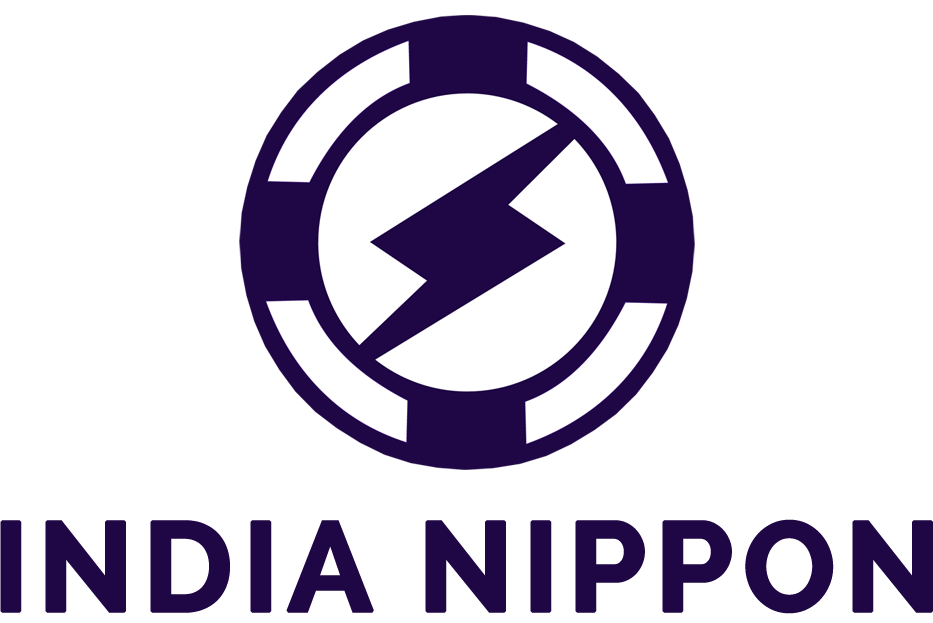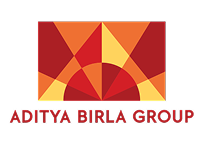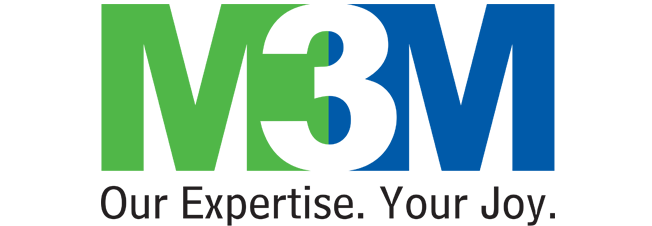Nyla Uddin • December 2, 2025
Streamline your sourcing process with eRFx software

Last update: November 5, 2025
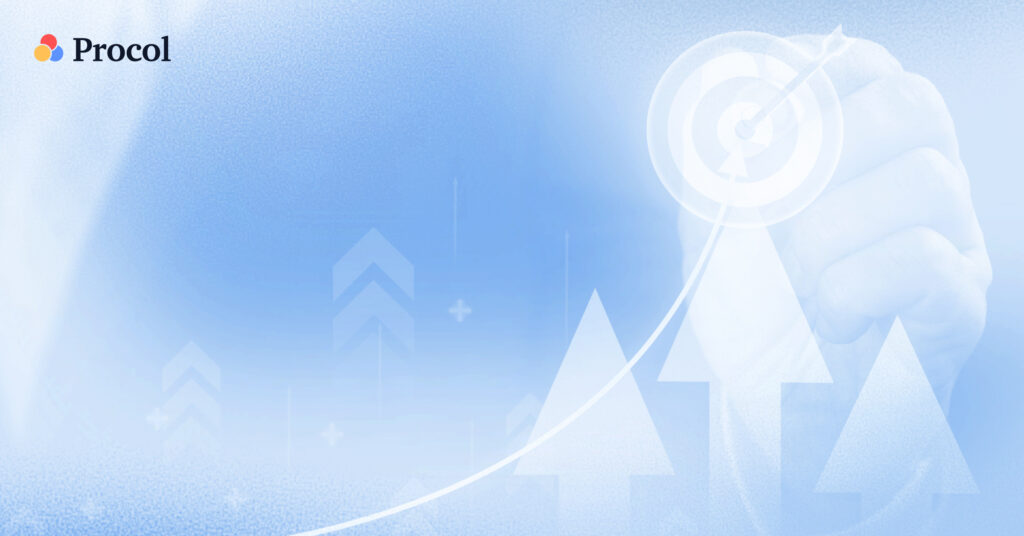
Organizations are embracing tools for digital procurement, such as eRFx, to streamline their sourcing process and make it more secure in the fast-paced world of procurement. eRFx, Electronic Request for Information, Proposal, or Quotation, provides easier access to supplier engagement, evaluation to a higher level of standardization, and better logistics for decision-making by the organization. The remainder of this blog will provide you with an understanding of eRFx, why it matters, identify the benefits it brings to the procurement process, provide examples of the types of eRFx, and what are the key elements to have in this type of solution and provide an overview of how platforms like Procol can help organizations in eRFx, so you can obtain smarter, faster, and compliant sourcing with the right regulations.
What is eRFx in procurement?
eRFx (or Electronic Request for X) is a digital procurement process that utilizes software to manage requests from the buyer to the suppliers for information, proposals, or quotes. eRFx replaces manual, paper-based procurement methods with an electronic, structured workflow. Organizations can issue the requests to the suppliers, receive their responses, and compare bids all in one single platform that enhances informed decision-making. eRFx increases efficiency and transparency, and compliance for procurement, and enables organizations to save time and money. eRFx is essential for any organization looking to modernize and drive sourcing optimization.

What are the benefits of an efficient eRFx?
In the new normal of the competitive procurement environment, organizations are expected to be fast and furious while keeping or maintaining accuracy, compliance, and transparency. The traditional sourcing strategies are usually not adequate, leading to inefficiencies and lost opportunities. Efficient eRFx is exactly what is needed to address this challenge. Efficient eRFx helps you streamline sourcing workflows, lower costs, and improve decision-making within a secure, scalable platform. Here are the top 10 benefits of an eRFx that are an absolute necessity for any modern organization.
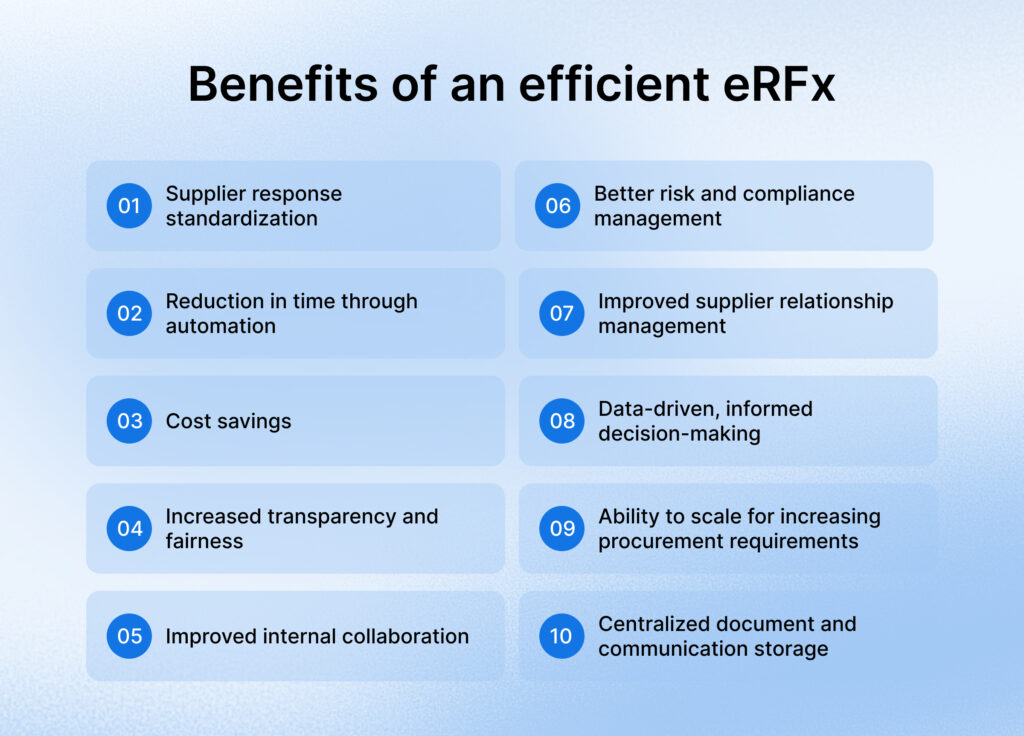
1. Supplier response standardization
Efficient eRFx tools ensure a structured format is provided to suppliers responding to RFIs, RFPs, or RFQs to ensure they all have the same structured format. This allows for a clean comparison across bids and eliminates the confusion that can arise when submissions are in different formats.
2. Reduction in time through automation
Automation minimizes the frequent manual effort associated with preparing, sending, and collecting sourcing documents. This can speed the end-to-end process and allow procurement teams to spend their time on more strategic decisions rather than administrative ones.
3. Cost savings
By facilitating open bidding and comparative visibility to supplier offers, eRFx provides much greater ability to identify and negotiate the best price or lowest risk solution. In this way, it streamlines procurement spend and allows for more negotiating on the best offers.
4. Increased transparency and fairness
eRFx provides transparency by evaluating all suppliers using the same set of criteria and timelines. A transparent approach ensures an ethical, unbiased process that is easier to audit and defend.
5. Improved internal collaboration
Procurement usually involves several different departments. The eRFx platform can support collaboration with real-time input and feedback from stakeholders in finance, operations, and legal, all in one platform.
6. Better risk and compliance management
eRFx includes built-in audit trails, access control, and automated approval workflows to help maintain compliance with internal policies and external regulations, helping to minimize risks associated with fraud or mismanagement.
7. Improved supplier relationship management
Having central supplier data and performance can help organizations build relationships that benefit each side over the long term. Efficient eRFx makes it easy to identify good vendors and manage ongoing performance.
8. Data-driven, informed decision-making
eRFx platforms frequently contain analytics dashboards and scoring tools. These features allow a procurement team to assess bids fairly and objectively based on data as opposed to price or gut instinct.
9. Ability to scale for increasing procurement requirements
As an organization grows, its sourcing needs will also increase. Efficient eRFx systems are developed to scale, accommodating multiple events, suppliers, and teams without losing performance or control.
10. Centralized document and communication storage
Every procurement document, supplier responses, and a record of communication will reside in one secure location. It reduces errors, prevents lost documents, and is easy to obtain for auditors.
In summary, efficient eRFx is no longer a “nice to have” technology. It’s a requirement for organizations that want to improve sourcing processes, minimize costs, and bolster governance. eRFx mitigates the major problems of traditional procurement and enables a portfolio company to make better decisions in a more timely and transparent manner. Choosing to invest in the right eRFx technology provides the building block for procurement excellence in the future.
How can eRFx help the organisation in procurement sourcing?
eRFx (electronic Request for X) assists organizations with procurement sourcing by automating and streamlining the manual process, accomplishing efficiency improvements, greater transparency, and significant savings. Efficient procurement sourcing is a key to cost control, risk management, and supplier relationships. Email and spreadsheets simply don’t cut it anymore. Enter eRFx, electronic Requests for Information, Proposals, or Quotations, which help organizations bring consistency, speed, and strategy to the sourcing process. Below are the top 8 ways eRFx creates value in procurement sourcing:
1. Streamlining the sourcing process
eRFx automates repetitive tasks such as issuing RFQs, collecting bids, and evaluating proposals. This cuts down on manual work and shortens sourcing cycles significantly.
2. Lands on supplier comparison
Because all supplier information is collected in a consistent format, comparing offers based on price, quality, and evaluation differentiators is easy.
3. Enhances supplier inclusion and engagement
Standardized, explicit requests disseminated through eRFx platforms allow suppliers to better understand specifications and requirements, which results in more accurate, timely, and competitive responses.
4. Fosters collaboration between teams
Procurement, finance, and legal teams can collaborate on the same platform and view and score bids in real time, eliminating one-off email chains and concerns of the current proverbial “version confusion.”
5. Improves transparency and accountability
eRFx platforms create full audit trails and access logs for easy reference, ensuring that sourcing decisions can be traced back to the request(s) while complying with internal policy requirements and external regulations.
6. Stimulates competitive pricing
A structured, transparent process encourages suppliers to present their best possible offers when they know they are being evaluated fairly and in a reasonable, competitive environment.
7. Delivers instant insights and reporting
Dashboards and analytics provide procurement teams with immediate visibility into supplier performance, bid status, and sourcing, enabling data-driven decision-making.
8. Alignment with your organization’s growth
No matter if you are managing five sourcing events or fifty, eRFx platforms can effortlessly manage the increased complexity, number of suppliers, and volume of sourcing events.
eRFx supports procurement teams to Source Faster, Source Smarter, and add Better Value to the organization. By digitizing and optimizing the sourcing process, it turns procurement into a strategic process, not just an operation.
Different types of eRFx that are used in the procurement process
Procurement has evolved significantly from piles of paper, endless emails, and hours of back-and-forth with suppliers. Modern, even mature organizations, extract more and more of their procurement process electronically, increasing speed, intelligence, and transparency. One of the most common sets of tools is something that is called eRFx, which is a catch-all term for electronic Requests for Information, Quotation, Proposal, etc.
1. eRFI: an exploration
A request for information (RFI) is usually the first part in a formal strategic sourcing process. It is similar to fishing with a net; it’s too early in the process for you to actually be looking to purchase anything. Instead, you are investigating the marketplace and gathering information about what suppliers might be able to provide you.
For example, if your organization is interested in purchasing new software but you don’t necessarily know what is available, you might send an RFI to some vendors and ask them to explain their products, services, and expertise. At this point, your purpose isn’t to get pricing or proposals but simply to understand what is available. Then, based on what you discover, you will narrow the market down to a group of potential partners and go from there.
2. eRFQ: getting the numbers
Once you know your needs and you have enough knowledge about the environment and its components, the next step is to conduct a request for quotation (RFQ). This is where you ask the shortlisted suppliers to submit their quote for a specific level of goods or service.
RFQs are primarily used when buying standard products, in which price and delivery terms will dominate the comparison factors. The requirements are clear, and the focus is just about acquiring the price comparison and finding the lowest cost. This process is generally swift, transactional, and the lowest-priced qualified bid will win the order.
Not every procurement decision is a matter of price. Choosing the appropriate eRFx type at the right stage can have a substantial impact on your procurement function. It assists you not only in making informed decisions but also in managing supplier interactions and securing the best possible value for your organization.
If you’re just getting started in a new market or wrapping up a critical contract, eRFx tools allow you to organize the process and provide you with a level of efficiency that will enable you to proceed with confidence.
Best key features and capabilities of eRFx
The nature of procurement has transformed from the lowest price to strategic thinking that drives long-term value. Today’s procurement professionals are making fascinating data-driven decisions, as complexity has increased in the global supply chain and stakeholder expectations have changed. This complexity and increase in reliance on data require those involved in the sourcing process to use faster, smarter, and more collaborative tools than ever before.
If you’re requesting information, quotes, or full proposals from suppliers, eRFx tools serve to simplify the sourcing process. What is it that makes them such a powerful tool in the toolkit of the procurement professional? In the sections that follow, we’ll address the features and capabilities that make eRFx tools indispensable in today’s procurement environment.
1. Centralized communication with suppliers
One of the first advantages of eRFx, and perhaps most notable, is centralized communication. Procurement Professionals often have to manage emails, spreadsheets, phone calls, and dozens of documents in order to communicate with suppliers, and now eRFx software allows for singular management within a platform. One of the biggest benefits is keeping the process organized, enabling better alignment on participation while decreasing the possibility of miscommunication.
Suppliers can be invited to your sourcing event along with all procurement documentation, allowing suppliers the same ease of document, privacy, and communication in one centralized location. You can invite, share documentation, respond to questions, and track timelines and acknowledgments, all in one spot and without wasted time searching for a prior conversation (25% reduction in time).
2. Automated assessment and evaluation
Reviewing supplier responses manually can be labor-intensive and subjective. A notable benefit of eRFx is the automation of scoring according to your assessment criteria. You can weigh things such as price, quality, turnaround time, qualifications/certifications, or sustainability reporting, and the system will do the math.
This benefit saves time for you and also brings added transparency and objectivity to your purchasing process.
3. Supplier comparisons
After all responses are in, eRFx tools make it exceptionally easy to compare suppliers side by side. You won’t have to copy and paste into spreadsheets or waste time searching for the most important detail; everything is only a click away, in one consolidated fact sheet.
You can instantly see who best meets the lowest price, meets the most criteria, or has the most innovative approach; all without ever leaving the platform.
4. Integrated collaboration and approval
Sourcing decisions typically require feedback from various departments, including finance, legal, and operations, and may even include marketing or IT teams. eRFx tools allow you to create collaborative workflows that enable people to review submissions, add comments, and approve selections within the tool.
This enables a seamless process, ensures teams are aligned, and provides a complete audit trail of who has approved decisions and when.
5. Real-time analytics and reporting
An additional key benefit of utilizing an eRFx platform is your ability to get real-time data and insights. eRFx tools supply you with dashboards and reports so that you have access to this information in the moment, empowering procurement teams to make smarter decisions “backed” by data and report more efficiently to leadership.
6. Compliance and auditability
Today, procurement teams are under increased scrutiny to adhere to regulatory guidelines, follow internal policies, and practice ethical sourcing. eRFx platforms provide audit trails of the whole sourcing process from the time suppliers were invited until entering into final contracts.
This aids both compliance and risk management and promotes both internal and external trust that decisions were made in a fair and transparent manner.
7. Assistance for eAuctions and reverse bidding
Several eRFx platforms also offer eAuctions where suppliers can compete in real time by reducing their price to win your business; this can be very useful for large volume purchases where pricing is a primary consideration. You are able to define rules for how bidding occurs, set minimum pricing criteria, and observe suppliers competing against one another in a live environment, which can save a considerable amount of money.
How will Procol introduce eRFx into an organisation for secure procurement?
Introducing eRFx into an organization can be a significant change; however, Procol makes it simple, secure, and success-driven. Its eRFx solution is designed to help organizations transition from manual sourcing processes to digital ones, while ensuring control, compliance, and data security. The first step is a simple onboarding process. Its team collaborates with procurement stakeholders to configure workflows, set up user roles, and train internal teams and suppliers. This makes it simple to transition from manual sourcing to a fully digital sourcing environment.

It has prebuilt templates for RFIs, RFPs, or RFQs to create sourcing events that meet industry best practices easily. Users can customize fields and scoring criteria to ensure sourcing remains strategic and a structured practice.
This platform emphasizes security strongly; it utilizes role-based access controls, end-to-end encryption, and audit trails to ensure that procurement is protected. Data security was top of mind for Procol, while still allowing for transparency and accountability as required. Every piece of information a supplier produces, including bid history, timelines, and communications, is securely and safely stored in one place.
The platform also easily integrates into existing ERP and financial systems, ensuring seamless transfer of data without duplication. Capabilities for multiple users to collaborate in real-time provide the sourcing team the opportunity to work cross-functionally during sourcing events, increasing speed and accuracy.
Procol continues to work with an organization post-implementation, ensuring organizations optimize eRFx; eRFx offers a long-term procurement advantage and continues to provide long-term procurement value.
Conclusion
Effective eRFx processes are important for organizations that are looking to modernize and enhance supplier sourcing in their procurement process. eRFx will improve workflows, lessen manual errors, and improve overall decision-making. The eRFx process provides transparency, fair competition, a perception of compliance, and governs all regulatory requirements of the procurement function, yet develops strong relations with suppliers. Ultimately, embracing eRFx is a smart investment that changes the procurement function from a simple back-office function to a competitive advantage for the organization.

Frequently asked questions
What is eRFX in procurement?
eRFX stands for electronic Request for X, where the “X” refers to different types of procurement processes like Request for Proposal (RFP), Request for Quotation (RFQ), or Request for Information (RFI). It’s essentially a digital version of these traditional procurement processes, where organizations use software to create, distribute, and evaluate vendor proposals or quotes. It streamlines communication, enhances transparency, and speeds up the decision-making process by centralizing all the information in one platform.
What are the three types of procurement?
Procurement is typically broken down into three main types: Direct procurement: This involves acquiring goods and services directly needed for production or the core operations of a business, like raw materials, machinery, or finished goods. Indirect procurement: This refers to products or services that support the business but aren’t directly involved in the production process, like office supplies, marketing services, or IT support.
And lastly, services procurement involving the acquisition of professional services, like consulting, staffing, or outsourcing, which play a crucial role in operations but aren’t tangible products.
What is the best software for procurement?
The “best” software can depend on your company’s specific needs, but some top-rated procurement software solutions are:
- Procol: An excellent choice for businesses looking for user-friendly, cloud-based procurement tools with features like supplier management, approval workflows, and spend analytics.
- SAP Ariba: Known for its robust features and scalability, it’s ideal for large organizations looking to streamline their procurement processes across global supply chains.
- Coupa: Offers a comprehensive suite of procurement solutions, including expense management and supplier collaboration, suitable for mid-to-large enterprises.
- Jaggaer: A strong contender for industries like education and healthcare, offering customizable procurement and spend management solutions.
Ultimately, the best software is the one that fits your organization’s size, industry, and specific procurement challenges.
Schedule a Demo
We’d love to hear from you. Please give us a call on +1 (209) 305-4922.
Explore more from Procol
Discover expert tips, how-to guides, industry insights, and the latest procurement trends.
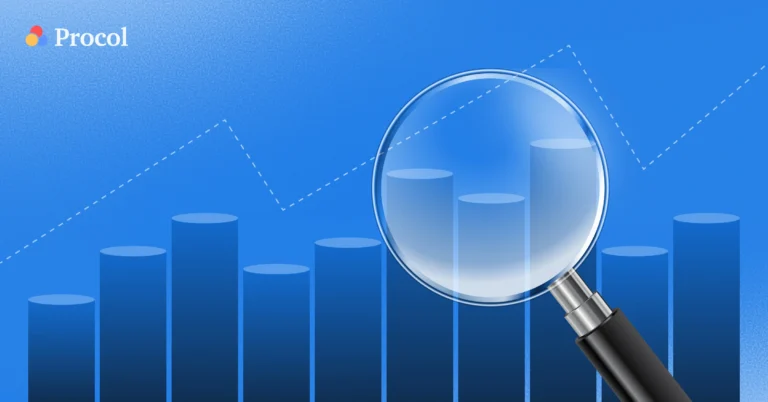
The complete guide to spend analysis in procurement | Procol
In today’s business environment, understanding where your money goes is just...
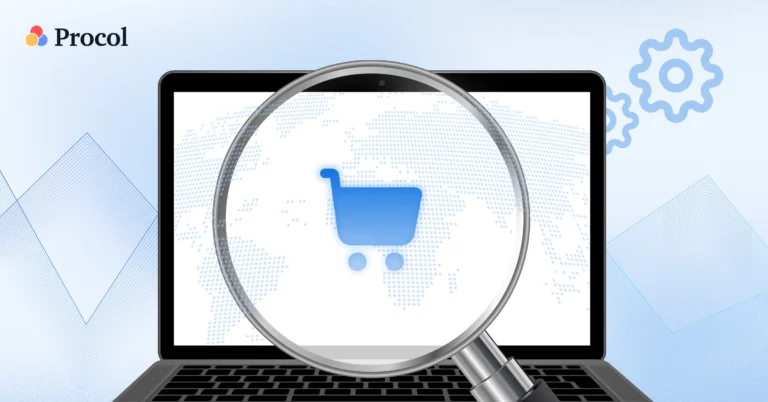
eSourcing strategy: Maximizing savings & efficiency in procurement
The procurement function is a central pillar of success, continuously managing...
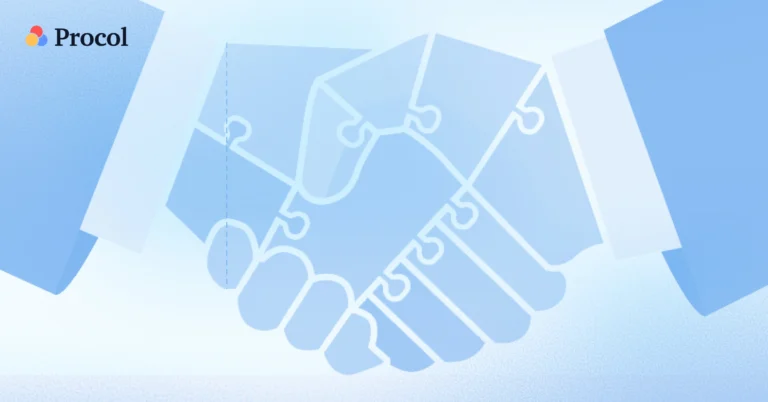
Supplier relationship management strategies : The complete guide
In today’s complex business environment, successful operations depend heavily on strong,...

